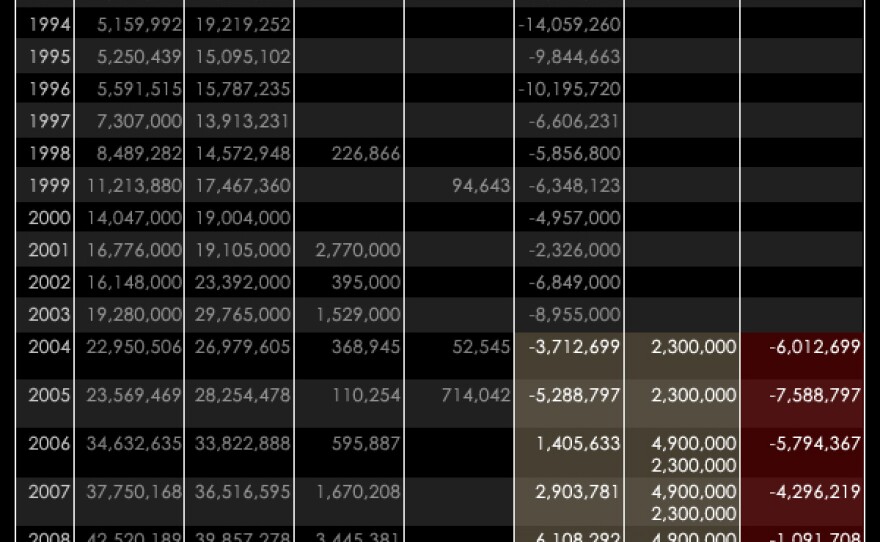KPBS Special Series
The Port of San Diego is a public agency charged with managing the bayfront. It claims its top goals are strengthening its finances and building public trust. But over the past 15 years, the port has lost tens of millions of dollars in maritime operations. KPBS Reporter Amita Sharma found the port has not clearly documented those losses for the public.
Maritime operations are the main reason for a port to exist. The maritime division is the gateway for people and goods to come by sea to San Diego. For most of its history, maritime has lost money. Since 1993, the port’s books show losses totaling $80 million.
“As a matter of fact, the last three years the maritime division has actually shown a profit for the first time in the history of the port,” says Ron Popham, the Port's maritime director.
Contrary to what Popham says, a KPBS examination of the port’s budgets shows there were a few years of profits in the 70s and 80s. But they were a tiny fraction of losses that were recorded in previous years, including a loss of $9 million in 2003. But in recent years, the public hasn’t been told about those losses. (Story continues below)

For example, in 2005 the port budget, posted online, showed marine division income of $24 million and expenditures of nearly $16 million. To the public that looks like a profit of $8 million. But the expenditures don’t include operating costs that are never detailed in the report. The port’s internal numbers show the maritime division actually lost $5 million that year.
“There’s an adage that accountants use that profit is a fiction and cash is a fact.”
Frank Partnoy teaches corporate finance at USD Law School.
“We certainly need to see something more about cash in order to know the health of marine operations. That’s what people actually care about if they’re looking at the health of the port,” says Partnoy.
For decades, the public did get to see the bottom-line cash flow figures for marine operations. But in 2000, the port started to leave out certain expenses in its public budgets. And those expenses were crucial in determining just how well maritime was doing because they totaled millions of dollars.
“Any company that changes its practice that moves from more transparency to less should at a minimum explain the rationale for that change.”
“Our desire when we’re doing budgeting is openness and transparency,” Partnoy explains.
The port’s Chief Financial Officer Jeff McEntee says the agency began omitting certain expenses because . .
“It wasn’t really adding value to have general administrative and depreciation expenses in the budget,” says McEntee.
But they’re expenses nonetheless says business Attorney Mark Mazzarella. And including all costs for the public to see is crucial for transparency.
“The public has the right to assess the performance of its public servants and if a public agency is performing at a significant loss but is trying to make itself look like it’s performing at less than the loss it is performing at. That would be basically deceiving the public into thinking that the agency is doing better than it is,” he says.
In 2004, the port began transferring millions of dollars from real estate revenue into marine operations. With real estate money transferred, the port’s maritime division posted a loss of $80 million since 1993. Without those transfers, the loss would have been $106 million.
The port’s McEntee says the transfers are justified.
“They’re all maritime related, all have to do with shipyards, yacht repair facilities. They’re dependent on the water,” says McEntee.
But San Diego City Councilman Carl DeMaio says the port’s claims and numbers don’t add up.
“It’s Enron-like accounting. It’s doctoring your financials to present a pretty picture when in fact it’s to mask the fact that taxpayers are losing millions of dollars on certain port properties, for example the Tenth Avenue terminal," DeMaio says.
In part 2 of this series, we’ll explore why the Tenth Avenue Marine Terminal has lost millions, and why the port defends its existence.





